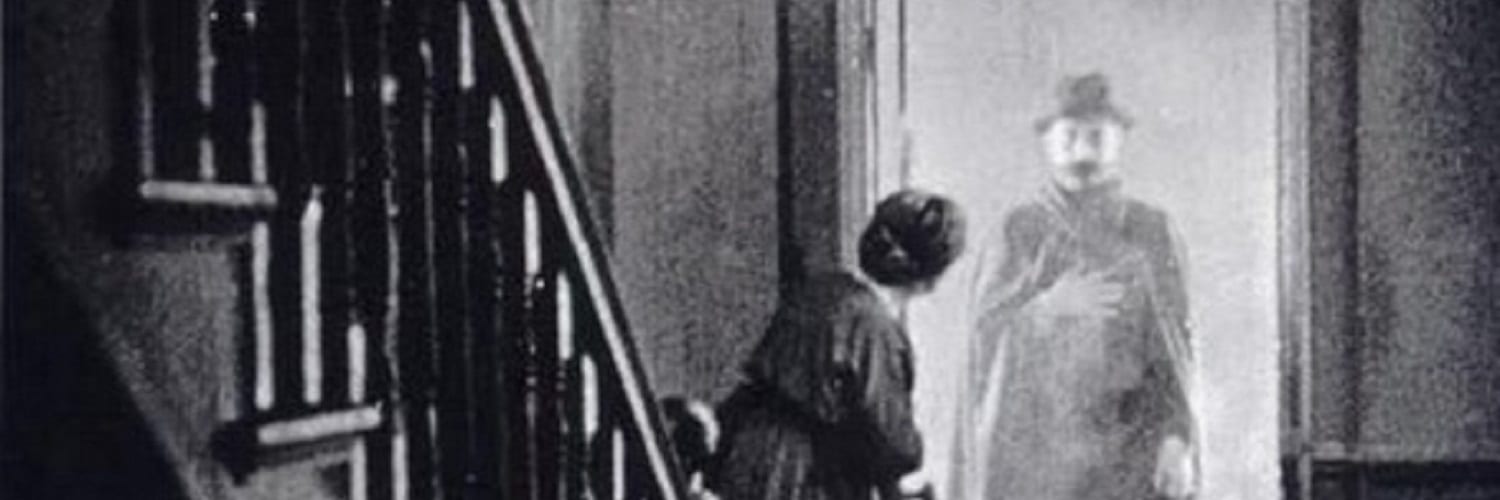Week 1: The Lodger

We begin by reading Marie Belloc Lowndes’ novel "The Lodger," which was published in 1913 and became an immediate, worldwide hit, selling more than one million copies in the next twenty years. The novel focuses on the Buntings, a married couple on the verge of desperation who are rescued by a mysterious man who rents a room in their house. The novel charts their growing suspicion towards him: Is he linked to the series of murders that are taking place in the neighborhood? What about his attraction for their daughter Daisy? The Lodger creates an atmosphere of doubt and mistrust that challenges us to decide for ourselves who is guilty.
Meet the Faculty
Presented by Susan Ohmer

Susan Ohmer is the William T. and Helen Kuhn Carey Associate Professor of Modern Communications in the Department of Film, Television, and Theatre at the University of Notre Dame. She is a film historian and teaches courses relating to U.S. and international films and film industries. Her classes have focused on such popular topics as Harry Potter, Walt Disney, and Peter Pan, and she has taught a course on Alfred Hitchcock’s London for Notre Dame’s Global Gateway there. Dr. Ohmer is currently completing a book on the Disney studio that will be part of the Routledge Hollywood Centenary series.
Pre-Reading
Presented by Susan Ohmer
The Lodger by Marie Belloc Lowdnes is available from the Hesburgh Library as a free download. Read the first two chapters for an introduction to the Bunting family and the introduction of the lodger. If you are interested in reading more, go on to chapters 3 and 4 to learn more about the characters of Daisy and the detective. If you’re outside of the US, you can get these chapters on Project Gutenberg.
Marie Belloc Lowndes
Presented by Susan Ohmer
Marie Belloc Lowdnes is the author of “The Lodger” from which Hitchcock drew inspiration for his film, “The Lodger: A Story of the London Fog.”
Hitchcock’s London
Presented by Susan Ohmer
When we hear the name Alfred Hitchcock, many people think of films that feature iconic American landscapes: Jimmy Stewart wandering through San Francisco in “Vertigo” or Cary Grant and Eva Marie Saint clambering down Mount Rushmore in “North by Northwest.” But before Hitchcock moved to Hollywood in 1939, he wrote, directed, and designed more than two dozen films in London, from the mid 1920s through the end of the 1930s. London is not just a backdrop in these films. Their plots and characters emerge from the distinctive neighborhoods of the city and dramatize the changing social conditions of the era. Hitchcock’s films engage with London. The characters roam the city’s streets, use public transportation, and enjoy London’s popular amusements. The stories often embroil these characters in England’s legal system and political movements and challenge prevailing norms of gender and morality. By representing London and its inhabitants so vividly on screen, Hitchcock created memorable stories and compelling images of the city.
Hitchcock’s London films are admired for their creative use of visual and narrative strategies. Our series highlights key elements of Hitchcock’s style and the different ways his films engage with London. We begin with “The Lodger” (1927), a thriller adapted from Marie Belloc-Lowndes’ popular novel that was inspired by the Jack the Ripper story. Hitchcock draws on stylistic elements from contemporary German cinema to create evocative spaces in which characters struggle to make sense of their environment and each other. Guilt is a central theme of both the novel and the film: Is the lodger guilty or not, and of what? Themes of guilt and detection are also prominent in “Sabotage” (1936), where a detective falls for a woman whose behavior challenges his understanding of right and wrong. The film draws on Joseph Conrad’s “The Secret Agent” (1907), a novel about spies and anarchists in the East End of London in the 1880s that Hitchcock updates to refer to the Nazi threat to England in the 1930s. Both films enable us to examine the stylistic and thematic qualities of Hitchcock’s films and to deepen our appreciation for the city he loved. I look forward to exploring them with you.
Jack the Ripper as Inspiration
Presented by Susan Ohmer
Infamous London serial killer, Jack the Ripper, served as inspiration for Marie Belloc Lowdnes’ ‘The Lodger’, and in turn, Hitchcock’s film ‘The Lodger: A Story of the London Fog’. However, the novel is not so much about the character of Jack the Ripper, as the effects of the criminal on a particular family.
The Novel of "The Lodger"
Presented by Susan Ohmer
There are elements of the novel that are useful to pay close attention to, including how the author sketches the financially precarious circumstances in which the family lives, their psychological process in dealing with the lodger, and the psychology of the lodger himself.
View the Event
Presented by Susan Ohmer
Subscribe to the ThinkND podcast on Apple, Spotify, or Google.
Featured Speakers:
- Susan Ohmer, The William T. and Helen Kuhn Carey Associate Professor of Modern Communication, University of Notre Dame
- Kieron Webb, Head of Conservation, British Film Institute
- Rev. Jim Lies C.S.C., Director for Academic Initiatives & Partnerships, University of Notre Dame, London, England
London Book Club Zoom Backgrounds
Use these stunning London Global Gateway virtual backgrounds in your Zoom.
Additional Resources
Presented by Susan Ohmer
- A wonderful site for all things Hitchcock: The Hitchcock Zone
- Popular responses to “The Lodger”
- For further details on the British Film Institute’s landmark restoration of “The Lodger”
